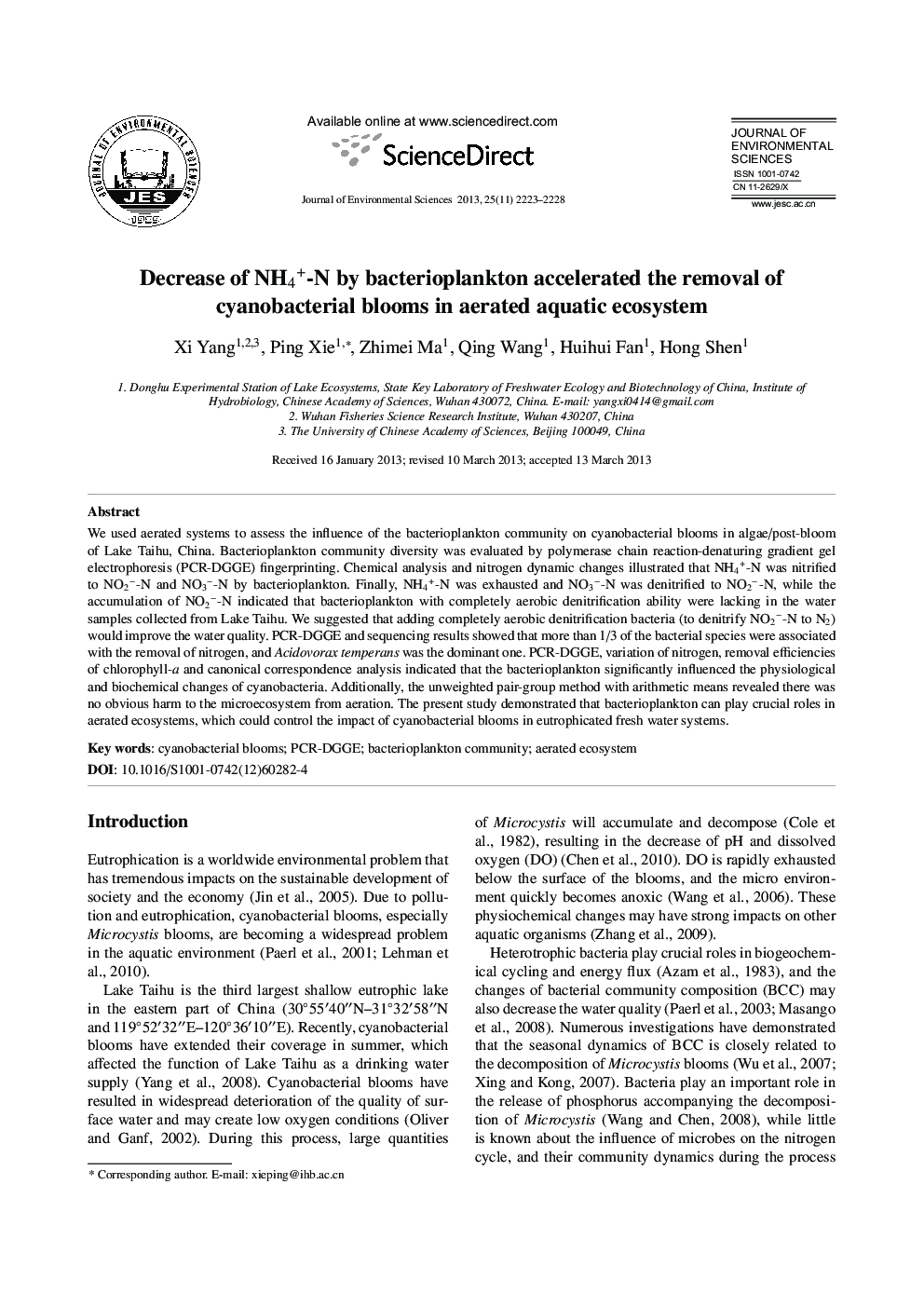| Article ID | Journal | Published Year | Pages | File Type |
|---|---|---|---|---|
| 4454467 | Journal of Environmental Sciences | 2013 | 6 Pages |
We used aerated systems to assess the influence of the bacterioplankton community on cyanobacterial blooms in algae/post-bloom of Lake Taihu, China. Bacterioplankton community diversity was evaluated by polymerase chain reaction-denaturing gradient gel electrophoresis (PCR-DGGE) fingerprinting. Chemical analysis and nitrogen dynamic changes illustrated that NH4+-N was nitrified to NO2−-N and NO3−-N by bacterioplankton. Finally, NH4+-N was exhausted and NO3−-N was denitrified to NO2−-N, while the accumulation of NO2−-N indicated that bacterioplankton with completely aerobic denitrification ability were lacking in the water samples collected from Lake Taihu. We suggested that adding completely aerobic denitrification bacteria (to denitrify NO2−-N to N2) would improve the water quality. PCR-DGGE and sequencing results showed that more than 1/3 of the bacterial species were associated with the removal of nitrogen, and Acidovorax temperans was the dominant one. PCR-DGGE, variation of nitrogen, removal efficiencies of chlorophyll-a and canonical correspondence analysis indicated that the bacterioplankton significantly influenced the physiological and biochemical changes of cyanobacteria. Additionally, the unweighted pair-group method with arithmetic means revealed there was no obvious harm to the microecosystem from aeration. The present study demonstrated that bacterioplankton can play crucial roles in aerated ecosystems, which could control the impact of cyanobacterial blooms in eutrophicated fresh water systems.
